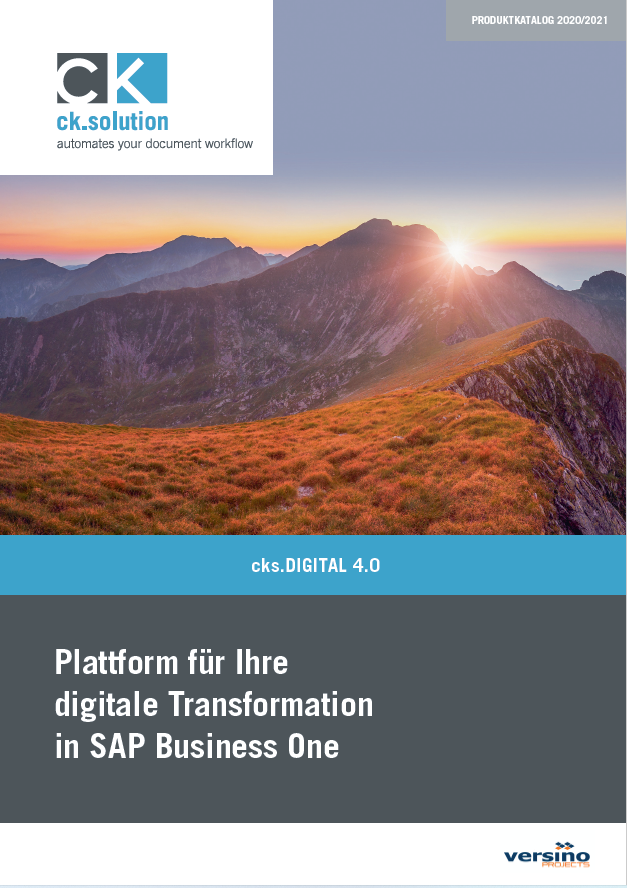The manual capture and further processing of paper-based invoices is a time-consuming and costly process in the Accounts Payable of many companies. Almost every company is affected by this. In addition to time-consuming manual and typing work, every invoice entered manually also involves a media break between the paper document and the invoice. Financial accounting software associated with this. This is not only labour-intensive, but also error-prone. At the same time, incoming invoice processing (ERV) can be standardised to a high degree and is virtually crying out for automation.
Increasing importance of incoming invoice processing
While paper-based invoice exchange is still the main practice today, the legislator has now significantly reduced the hurdles for electronic invoice exchange. In particular, the unpopular obligation for users to use a qualified electronic signature (QES) has been abolished. Just a few years ago, this was necessary for the recognition of input tax deduction for electronic incoming invoices. This makes it possible, for example, to simply send invoices as PDFs via E-mail possible. The main beneficiaries of this simplification are Small and medium-sized enterprises. The latter had some reservations about the required signature technologies.

The importance of electronic invoices in the everyday life of all companies is thus increasing as steadily as their prevalence. For electronic incoming invoices, however, the legislator requires an electronic invoice, GoBD-compliant filing. Printing and paper-based filing are not permitted.

Provider for incoming invoice processing
Almost all DMS manufacturers now offer so-called standard solutions for incoming invoice processing. In addition to paper invoices, these also increasingly take incoming invoices into account. ERV solutions, on the other hand, do not replace existing ERP- and document management solutions, but also supplement them with technical functions. This involves the electronic reading of invoice data, as well as all steps for automated posting in the ERP system and for the protected storage of digital invoice documents in an electronic filing system.
Different names are given to the same child:
- Incoming invoice processing
- Invoice processing
- Electronic invoice processing
- (Receipt) account book
- Invoice receipt book
- Accounts Payable (AP) Automation
- Accounts payable workflow
- (Vendor) Invoice Management
- Invoice Processin
- Invoice workflow
- Purchase2Pay
Why process incoming invoices?
Electronic incoming invoice processing offers numerous advantages over manual invoice processing: the main reason for using electronic invoice processing is clear: to save costs. This is already possible with a large number of incoming invoices due to the elimination of typical manual activities. These include sorting and distributing invoice documents for different areas of the company. In addition, the automated Data collection of invoice and, if applicable, other accounting data in the ERP application achieve significant cost savings.
Additional advantages arise from the acceleration of transport and the release of the supporting documents. The employees who process or approve incoming invoices can do this from any location and at any time. Deadlines for payment and discounts can also be tracked electronically.
The use of functions to monitor the incoming invoice processing process gives the company more transparency about the status of invoices and the processing procedure. The employees responsible for invoice processing can monitor the processes better control and intervene remotely if necessary. Who hasn't experienced the incoming invoice that has been wandering through the company for weeks until it reaches the right contact person?
Ideally, automated processing of an invoice is possible. Manual intervention in the checking and booking process is then no longer necessary. The processing time is reduced and the processing quality is increased at the same time. If, for example, a suitable purchase order and a suitable goods receipt exist in the ERP system for an incoming invoice, manual checks can be largely dispensed with. The way is clear for automatic posting in the ERP system.
Introduction of incoming invoice processing
The introduction of electronic incoming invoice processing in a company is primarily NOT a technical project. It is above all a Project of the organisation, in which established processes are replaced and people are inspired by a new approach. convinced have to be made.
A key contribution to the successful introduction of electronic incoming invoice processing is the creation of the organisational framework. This includes the revision and Standardisation of processes for recording and processing invoice documents. In order to minimise the effort involved in recording, the previously decentralised receipt of documents should - if possible - be centralised. The number of different processes also increases the cost of training and administration for the overall solution.
The maximum reduction of manual processing requires maximum integration of purchasing and accounting processes. This concerns, for example, the highest possible proportion of invoices with reference to an order. Releases should be issued as early as possible in the ordering process and thus affect the related incoming invoice. Agreement with the DeliveryThe decision to include all the necessary information on incoming invoices should be made at an early stage.
CKS.DMS AP for SAP Business One

CKS.DMS ADC is the module for automatic incoming invoice processing for SAP Business One. This allows you to process incoming invoices fully automatically. You scan an Invoice and the corresponding document is automatically created in SAP Business One. The advantages are obvious. Electronic processing drastically reduces typing errors during data transfer. The same applies to the time required, which significantly speeds up your processes and therefore saves costs. The scanned Document remains stored in the document and is therefore available for visual comparison at any time and is archived


Travel expense report 2025

CANDIS for SAP Business One

Archiving of e-invoices

MariProject / Tool for e-invoicing

cks.eINVOICE -Addon for XRechnung & ZUGFeRD



